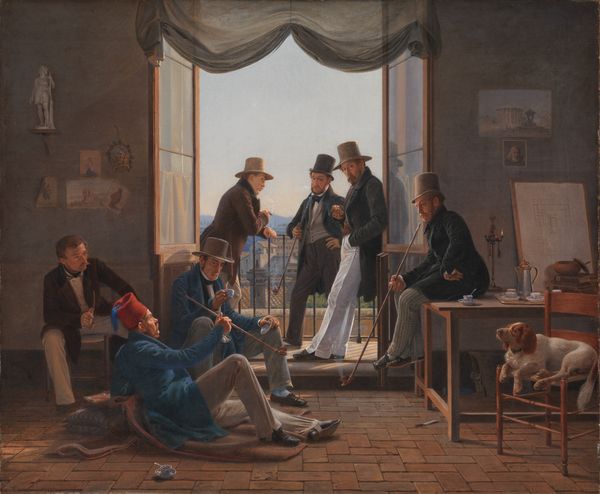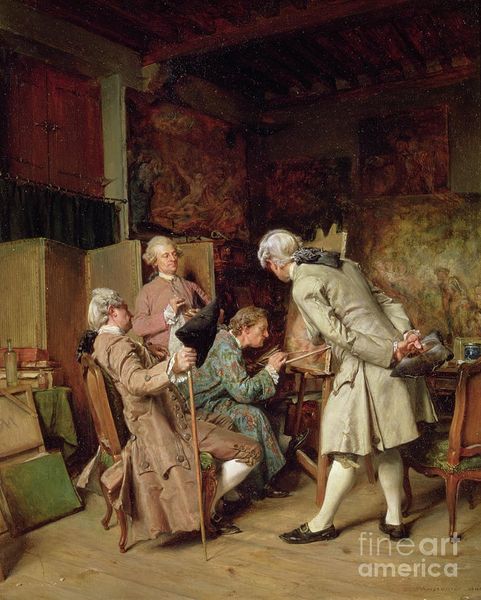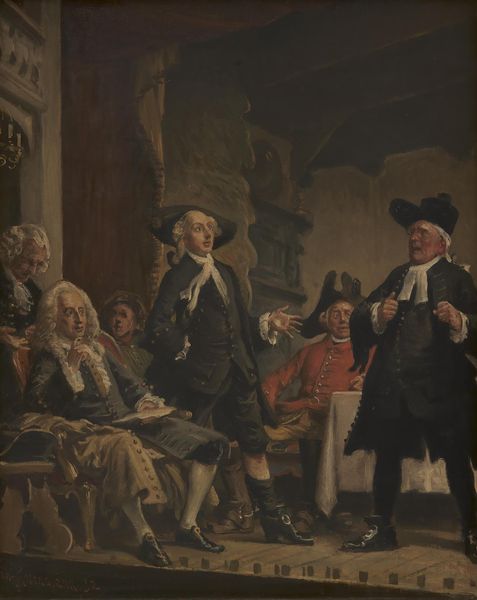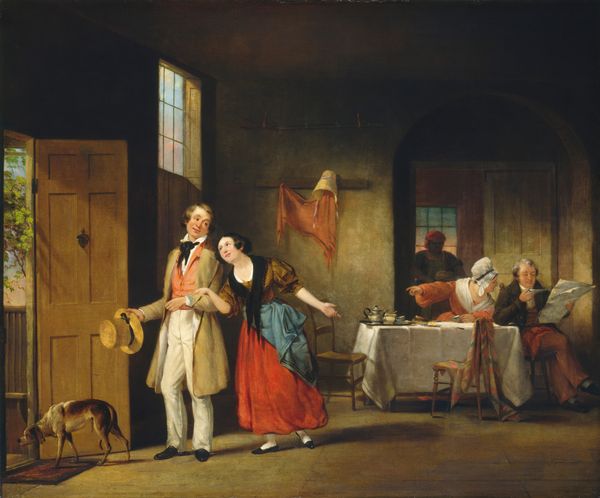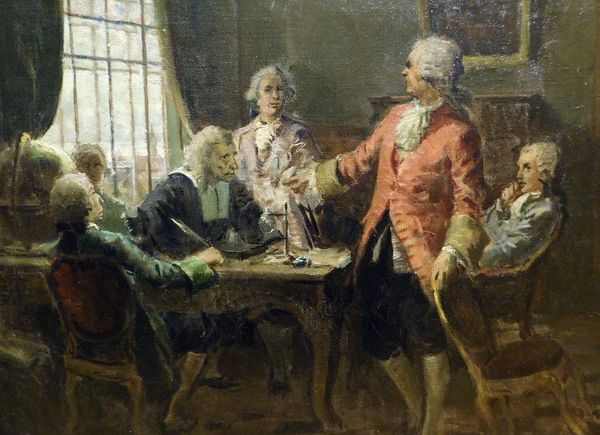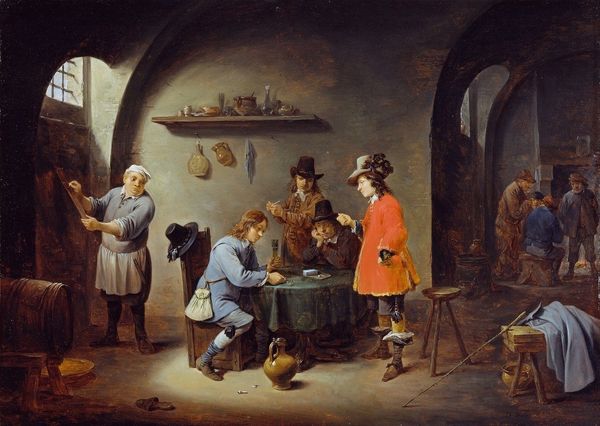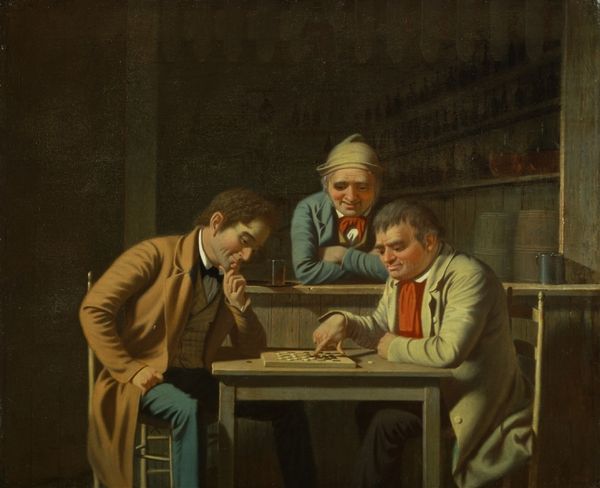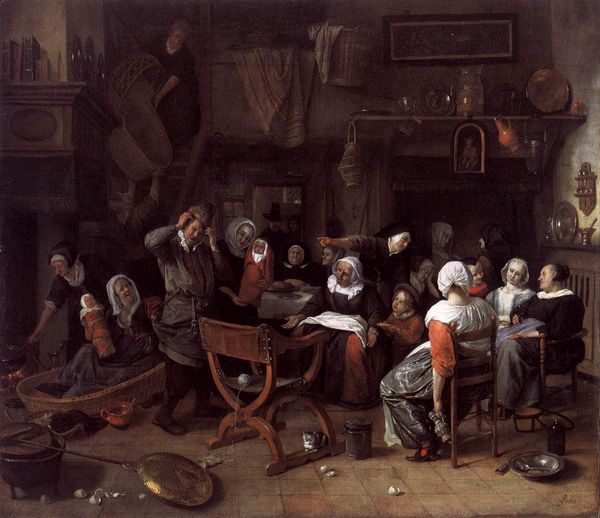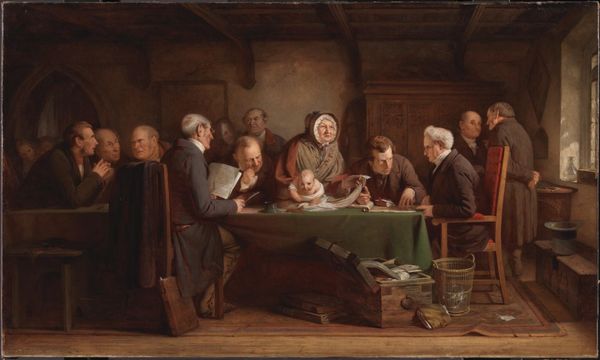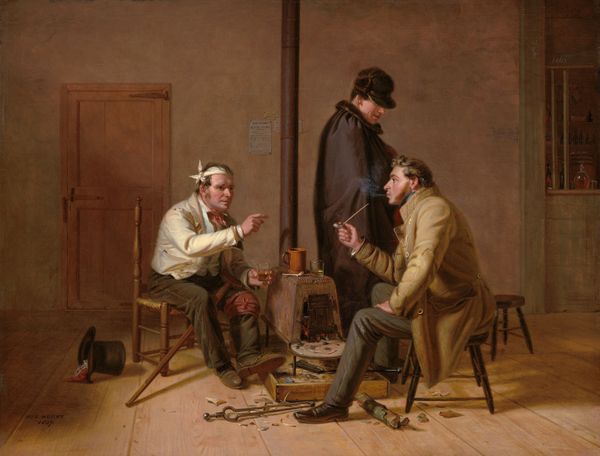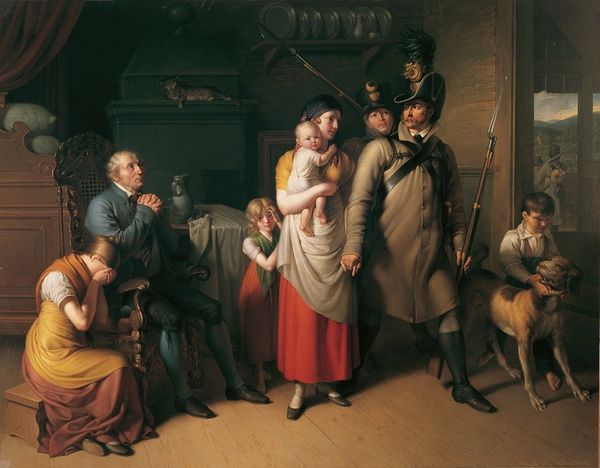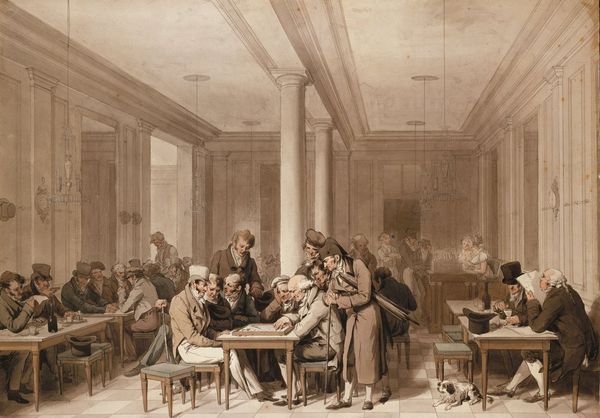
Dimensions: support: 1170 x 1550 x 33 mm frame: 1350 x 1733 x 72 mm
Copyright: CC-BY-NC-ND 4.0 DEED, Photo: Tate
Curator: Here we have Philip Reinagle's "Members of the Carrow Abbey Hunt," currently residing at the Tate. The canvas is quite large, roughly 117 x 155 cm. Editor: It feels staged, almost performative. Look at the men, so still, amidst the restless energy of the dogs. Curator: Indeed, Reinagle’s work speaks volumes about the social rituals of the English gentry. The hunt itself was a highly structured social event, reinforcing class boundaries and land ownership. Editor: And materially, it’s fascinating. The contrast between the smooth, almost porcelain skin of the men and the rougher textures of their hunting clothes, the wooden stocks of the rifles above them. It all speaks to the craft of creating these identities. Curator: Absolutely. Reinagle’s attention to detail underscores how these men curate their image through dress, leisure activities, and even the trophies displayed on the walls. Editor: It makes you wonder about the labor involved in producing these materials, the unseen hands that contribute to this carefully constructed world of leisure. Curator: A potent reminder of the complex power dynamics embedded within seemingly simple scenes. Editor: It shifts how I see the work, noticing the visible labor and invisible labor that the artist's hand captured and the history leaves out.
Comments
tate 7 months ago
⋮
http://www.tate.org.uk/art/artworks/reinagle-members-of-the-carrow-abbey-hunt-t07218
Join the conversation
Join millions of artists and users on Artera today and experience the ultimate creative platform.
tate 7 months ago
⋮
Reinagle was best-known for his landscape, sporting and animal subjects. This splendid conversation-piece, the first work by him to enter the Collection, demonstrates that he was also an accomplished portrait painter. This scene showing the members of a Norfolk hunt seems to exemplify the whole ethos of English sporting life in the eighteenth century. It is a somewhat austere portrayal of a respectable and healthy group of gentlemen about to embark on their morning exercise. In this it is in contrast to the more critical images of sportsmen found in literature of the period, which satirised them for their boorish behaviour. Gallery label, August 2004
